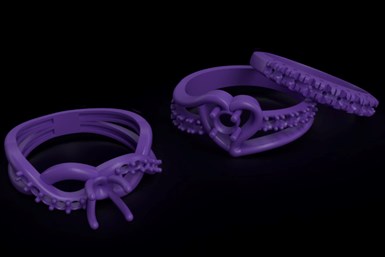PostProcess Solution for Automated Wax Support Removal
The PLM-601-SUB detergent is said to enable automated wax support removal on even the most intricate and delicate build parts.
Share
Read Next

Photo Credit: PostProcess Technologies
PostProcess Technologies has developed a solution for wax support removal as a part of its offering of automated and intelligent additive manufacturing (AM) postprocess solutions. After extensive development and testing, its PLM-601-SUB chemistry formulation enables wax support removal on even the most intricate and delicate build parts, the company says.
The detergent plays a significant role in the company’s Submersed Vortex Cavitation (SVC) technology, which is said to utilize software intelligence to ensure that 3D printed parts are uniformly, consistently and reliably exposed to detergent as they undergo postprinting for precision finished parts.
It is said 3D printed wax casting is widely adopted across many industries and is especially useful for luxury and jewelry makers due to its ability to make highly detailed patterns for lost wax casting. Due to the fragile nature and high breakage rate of these 3D printed parts, highly trained technicians are required, which can lead to overall low productivity.
Traditional wax support removal is said to require processing with IPA, which is typically time intensive with a multistep process, inconsistent and requires extensive manual labor with high technician attendance time. Safety concerns are associated with this form of support removal due to the necessity of heating the highly flammable IPA bath. The low longevity of IPA also has a negative impact on the environment due to the large amounts of waste generated.
The formulation of PLM-601-SUB detergent was developed specifically to solve these wax support removal concerns. The detergent has a flashpoint of 200°F (93°C) with low volatility and is said to have 2-3 times the longevity of other solvents. Large batches of small 3D printed parts can be processed in the DEMI family of solutions with software-controlled parameters, making the process safe and easy for operators. Full batches can be processed in approximately 30 minutes, significantly reducing the technician time typically required to remove wax from parts.
Related Content
-
Aircraft Engine MRO: How Additive Manufacturing Plus Robotic Finishing Will Expand Capacity for Blade Repair
AM offers the chance to bring fast, automated processing to individualized, part-by-part restoration of turbomachinery. A cell developed by Acme Manufacturing and Optomec is able to automatically repair 85,000 unique aircraft engine blades per year.
-
Seurat: Speed Is How AM Competes Against Machining, Casting, Forging
“We don’t ask for DFAM first,” says CEO. A new Boston-area additive manufacturing factory will deliver high-volume metal part production at unit costs beating conventional processes.
-
How Does Heat Treating Affect Machining Considerations for a Metal 3D Printed Part?
This picture of part distortion in additive manufacturing illustrates the kind of effects that part design or machining stock allowances need to anticipate.










